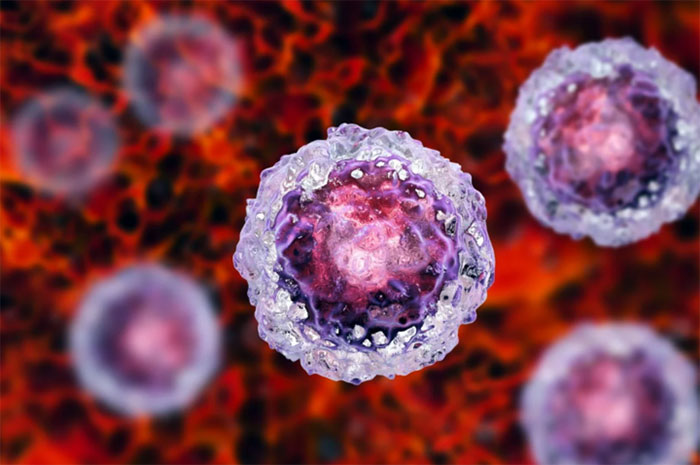China creates the basic substance of life with water and air
Chinese scientists have created amino acids - the building blocks of life - using only air and water thanks to a new environmentally friendly method.
Scientists at a laboratory in Hefei, Anhui province, southeastern China, have created amino acids - the basic building blocks of life - using only air and water, according to SCMP .
The project leader, scientist Zeng Jie of the University of Science and Technology of China (USTC), said the research also shows the potential to create more complex molecules, such as proteins.
Amino acids, the building blocks of proteins, play an important role in living organisms, and researchers have sought to synthesize glycine, the simplest stable amino acid.
Traditional methods for synthesizing glycine rely mainly on petroleum-derived products such as aldehydes and cyanides . These methods are not only energy-consuming but also generate a lot of waste, which is harmful to the environment.
The elements carbon, nitrogen, hydrogen, and oxygen required for amino acids can all be derived from carbon dioxide, water, nitrogen gas, and oxygen in the air.

Chinese scientists synthesize glycine - the simplest stable amino acid - using only air and water. (Photo: SCMP).
In the study, Chinese researchers created an electrocatalytic process that starts with air, paving the way for an environmentally friendly method of synthesizing amino acids.
Many scientists believe that life on Earth originated from chemical reactions in clouds, with lightning providing electricity to drive the synthesis of amino acids from air and water. As the reactions became more complex, they eventually transformed inanimate matter into complex living forms.
In the 1952 Miller-Urey experiment, scientists at the University of Chicago simulated Earth's early atmosphere by placing water, methane, ammonia, and hydrogen in a container and applying an electric charge to simulate natural lightning. After a week, they discovered several amino acids in the final product.
'The 1952 experiment mimicked the creation of primordial life molecules, but as mixed products containing several amino acids ,' said Zeng. 'In our experiment, we achieved the directed synthesis of a single amino acid - glycine - through an innovative process.'
The synthesis process consists of three main parts: carbon dioxide conversion, nitrogen gas fixation, and target carbon-nitrogen coupling.
Carbon dioxide is first converted to oxalic acid, then reduced to glyoxylic acid; nitrogen gas is synthesized to ammonia and then to hydroxylamine, which reacts spontaneously with glyoxylic acid via electroreduction to produce glycine.
Each step involves key catalysts and reactors. 'For example, the nitrogen fixation step uses a lithium-mediated method, which takes advantage of the reaction of metallic lithium to convert inactive nitrogen into lithium nitride and then into ammonia,' Zeng explained, adding that the method is similar to how lithium batteries work through chemical reactions.
After less than a day of continuous electrolysis, the team synthesized about 5.16 grams (0.18 ounces) of high-purity solid glycine in the lab using only air and water.
The team were delighted with the results. Mr Zeng said: 'Normal organic synthesis reactions produce products in milligrams, but we produced enough glycine that you could hold in the palm of your hand.'
The research results were peer-reviewed and published in late August in the journal Angewandte Chemie International Edition.
The research not only supports theories about the origin of life, but also provides an environmentally friendly synthesis method - it produces no pollution and the energy efficiency during the process is 5.9%, compared to the typical 2 - 3% efficiency of natural plant photosynthesis.
Zeng's team also experimented with using carbon dioxide to synthesize glucose chemically and biologically.
'We chose glycine because of its simpler structure among amino acids. Our team may explore the synthesis of more complex amino acids from natural materials in the future ,' he said. 'By combining glucose and amino acids, the most basic biomolecules, we have the opportunity to explore the synthesis of more complex biomolecules, which are of great importance to life.'
- Country: Things you don't know
- Make a drink from the fog
- The 'magic' turbine creates clean water from the air
- Discover the basic component of life in comets
- The cosmic factory makes basic materials of life
- We have heard that acid rain is much, so what about basic rain?
- The substance that makes human beings appear out of the world
- The substance that makes life
- China creates a 'water battery' that is nearly twice as powerful as a lithium battery but the price... remains the same
- Learn about the extent of body damage caused by alcohol and tobacco
- Detection of 'stimulant' increases fertility
- The new invention using graphene creates clean water from polluted seawater in a simple step
 'Fine laughs' - Scary and painful torture in ancient times
'Fine laughs' - Scary and painful torture in ancient times The sequence of numbers 142857 of the Egyptian pyramids is known as the strangest number in the world - Why?
The sequence of numbers 142857 of the Egyptian pyramids is known as the strangest number in the world - Why? History of the iron
History of the iron What is alum?
What is alum?